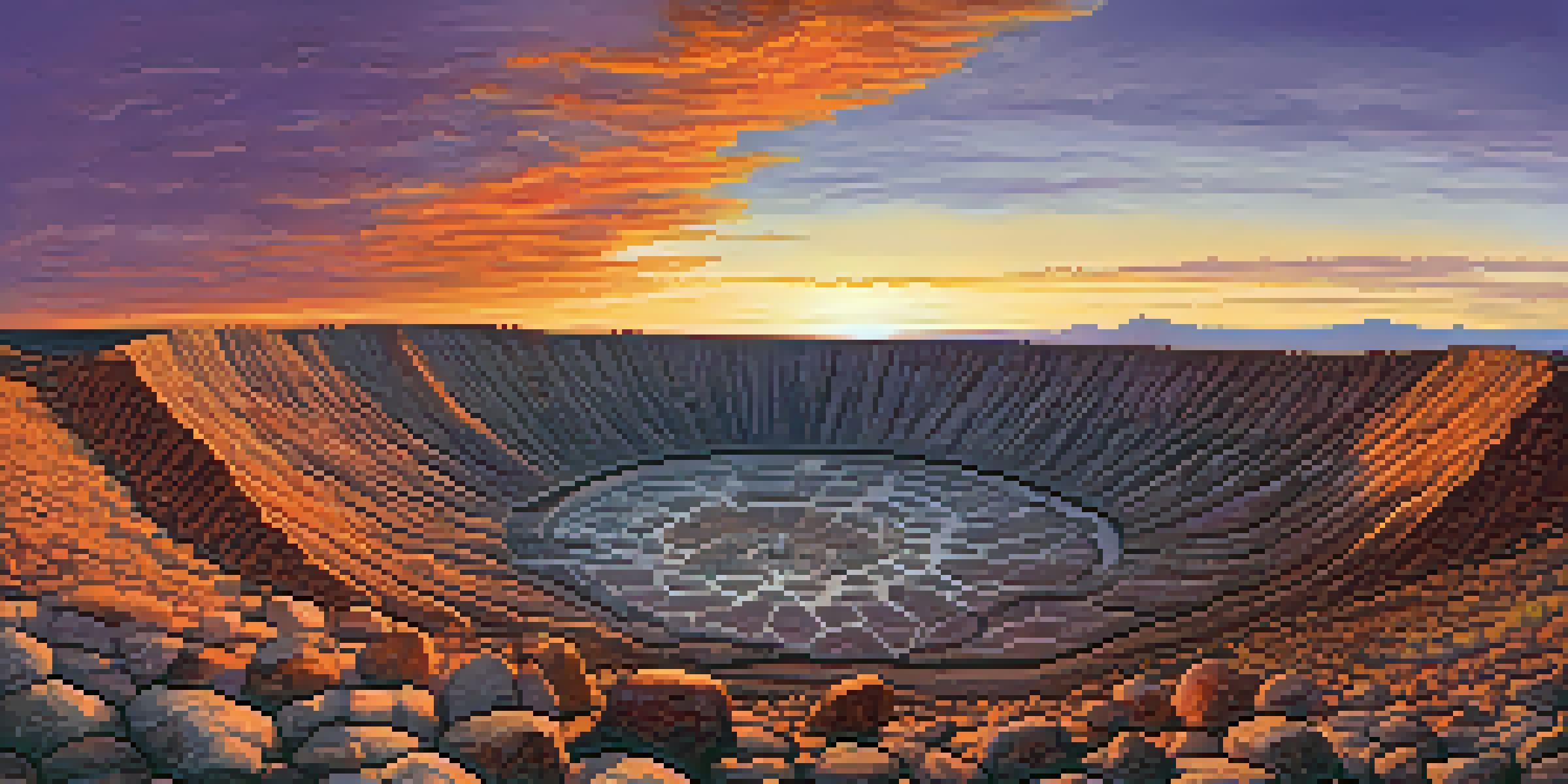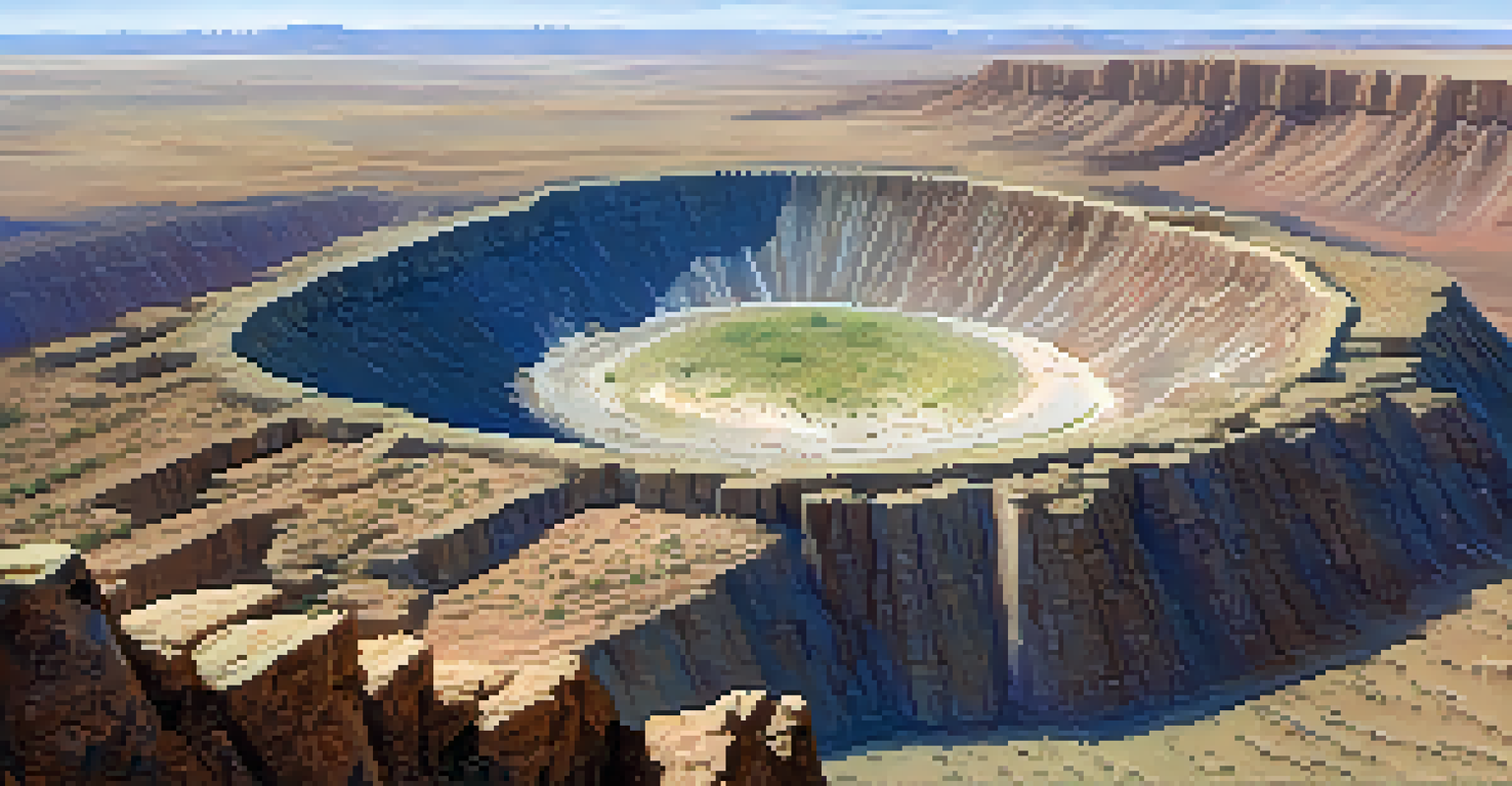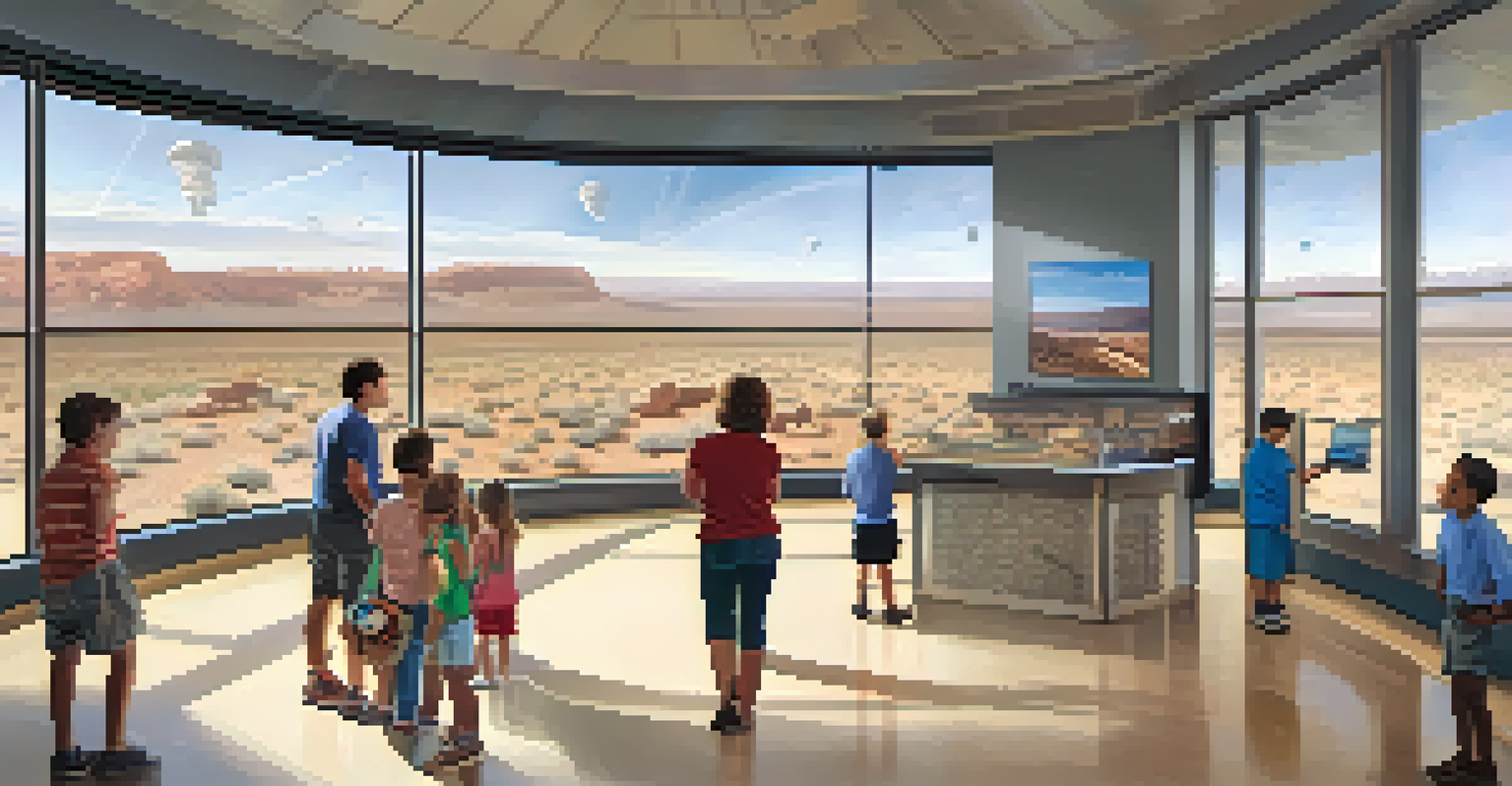Unraveling the Mysteries of Arizona's Meteor Crater Landscape

Introduction to Arizona's Meteor Crater
Arizona's Meteor Crater, often referred to as Barringer Crater, is a breathtaking natural landmark. Formed approximately 50,000 years ago by a meteorite impact, it offers a glimpse into our planet's cosmic interactions. This crater stands as a testament to the dynamic processes shaping Earth, making it a must-visit for nature lovers and science enthusiasts alike.
The Earth is a very different place than it was 50,000 years ago, but the scars of its past are still visible in places like Meteor Crater.
As you approach the crater, its immense size is astonishing—over a mile wide and 570 feet deep. This geological marvel invites visitors to ponder the forces of nature that created it. Each year, thousands of tourists flock to witness this intriguing site, eager to learn about its history and significance.
The crater's unique landscape, with its rugged terrain and varied geological features, tells a story of impact and transformation. It serves as a natural laboratory for scientists studying planetary processes, including those that have shaped other celestial bodies in our solar system.
The Science Behind the Meteor Impact
The formation of Meteor Crater was a dramatic event, involving a meteorite estimated to be about 150 feet in diameter. Upon impact, the energy released was equivalent to that of a nuclear bomb, creating a massive explosion that carved out the crater. This event not only changed the landscape but also provided valuable insights into the nature of meteor impacts.

Scientists have studied the crater extensively, examining its geology and the materials ejected during the impact. These studies help researchers understand the effects of similar events across the solar system, including how craters form on the Moon and Mars. The findings from Meteor Crater have implications for both Earth and planetary science.
Meteor Crater's Geological Significance
Arizona's Meteor Crater, formed by a meteorite impact 50,000 years ago, serves as a vital site for understanding planetary processes and impacts.
Interestingly, the crater's preservation is a result of its unique location in the arid Arizona desert. The lack of vegetation and minimal erosion has allowed it to maintain its features, making it an invaluable resource for ongoing scientific research.
Exploring the Crater: Visitor Experience
Visiting Meteor Crater offers an enriching experience for people of all ages. The site features a well-maintained visitor center that provides educational exhibits about the crater's history, geology, and the science of meteorites. Here, you can engage with interactive displays that make learning fun and accessible.
We are all made of star-stuff. The cosmos is within us. We are made of star stuff. We are a way for the universe to know itself.
For those looking to get up close and personal with the landscape, there are guided tours available. These tours take you around the rim of the crater, offering breathtaking views and insights from knowledgeable guides. Imagine standing at the edge, gazing into the depths of this ancient impact site—it's a sight that leaves a lasting impression.
Additionally, the surrounding area offers hiking trails that allow visitors to explore the unique ecosystem of the region. From the fascinating geological formations to the vibrant desert flora and fauna, there's always something new to discover in this stunning landscape.
Meteor Crater and Indigenous Culture
The history of Meteor Crater extends beyond its geological significance; it also holds cultural importance for Indigenous peoples. Native American tribes have long regarded the area with reverence, weaving the story of the crater into their cultural narratives. Understanding this context adds depth to the visitor experience.
Many Indigenous cultures view meteor impacts as significant events, often interpreting them through spiritual lenses. The stories told by these communities highlight the relationship between people and the land, emphasizing respect for nature and its wonders. When visiting, it's essential to recognize and appreciate this rich cultural heritage.
Cultural Importance for Indigenous Peoples
The crater holds significant cultural value for Indigenous tribes, who weave its story into their narratives, emphasizing the connection between people and nature.
By incorporating Indigenous perspectives into the narrative of Meteor Crater, we gain a more holistic understanding of the site. It reminds us that science and culture can coexist, enriching our appreciation of the natural world.
The Role of Meteor Crater in Education
Meteor Crater serves as an exceptional educational resource, attracting students, educators, and researchers alike. The site offers field trip opportunities that align with science curricula, allowing students to engage with real-world geological phenomena. This hands-on learning experience fosters curiosity and a deeper understanding of Earth science.
In addition to school groups, the crater also hosts workshops and seminars for educators, providing them with tools and resources to effectively teach about meteor impacts and planetary science. By equipping teachers with knowledge, the crater contributes to the broader goal of inspiring the next generation of scientists.
Moreover, the crater's significance in planetary science makes it a focal point for ongoing research and collaboration among institutions. Scientists frequently gather data that contributes to our understanding of impacts and their effects on both Earth and other celestial bodies.
Environmental Conservation Efforts
As a protected site, Meteor Crater is an example of successful environmental conservation efforts. The preservation of this unique landscape is essential not only for scientific study but also for future generations to enjoy. Conservation initiatives focus on maintaining the integrity of the crater and its surrounding ecosystem.
Efforts include monitoring visitor impact, managing invasive species, and restoring natural habitats. These actions help ensure that the crater remains a pristine environment where natural processes can continue. It's a reminder of the importance of protecting our natural wonders.
Educational Resource and Research Hub
Meteor Crater is a premier educational destination that offers hands-on learning experiences and serves as a focal point for ongoing scientific research.
Additionally, the crater's management collaborates with local communities and organizations to promote sustainable tourism. By fostering responsible visitation practices, they aim to balance the need for education and exploration with the imperative of conservation.
Future of Meteor Crater Research
The future of research at Meteor Crater looks promising, with ongoing studies aimed at uncovering more about the crater's formation and its broader implications. Scientists are particularly interested in how impacts affect planetary surfaces and what this can teach us about other celestial bodies in our solar system. With advancements in technology, our understanding continues to evolve.
New techniques in remote sensing and geological mapping are providing fresh insights into the crater's structure and composition. These methods allow researchers to analyze the impact's effects in unprecedented detail, contributing to our knowledge of impact events across the universe.

As interest in planetary science grows, Meteor Crater will likely remain a focal point for research and education. Its significance in understanding our planet's history ensures that it will continue to inspire future generations of scientists and explorers.